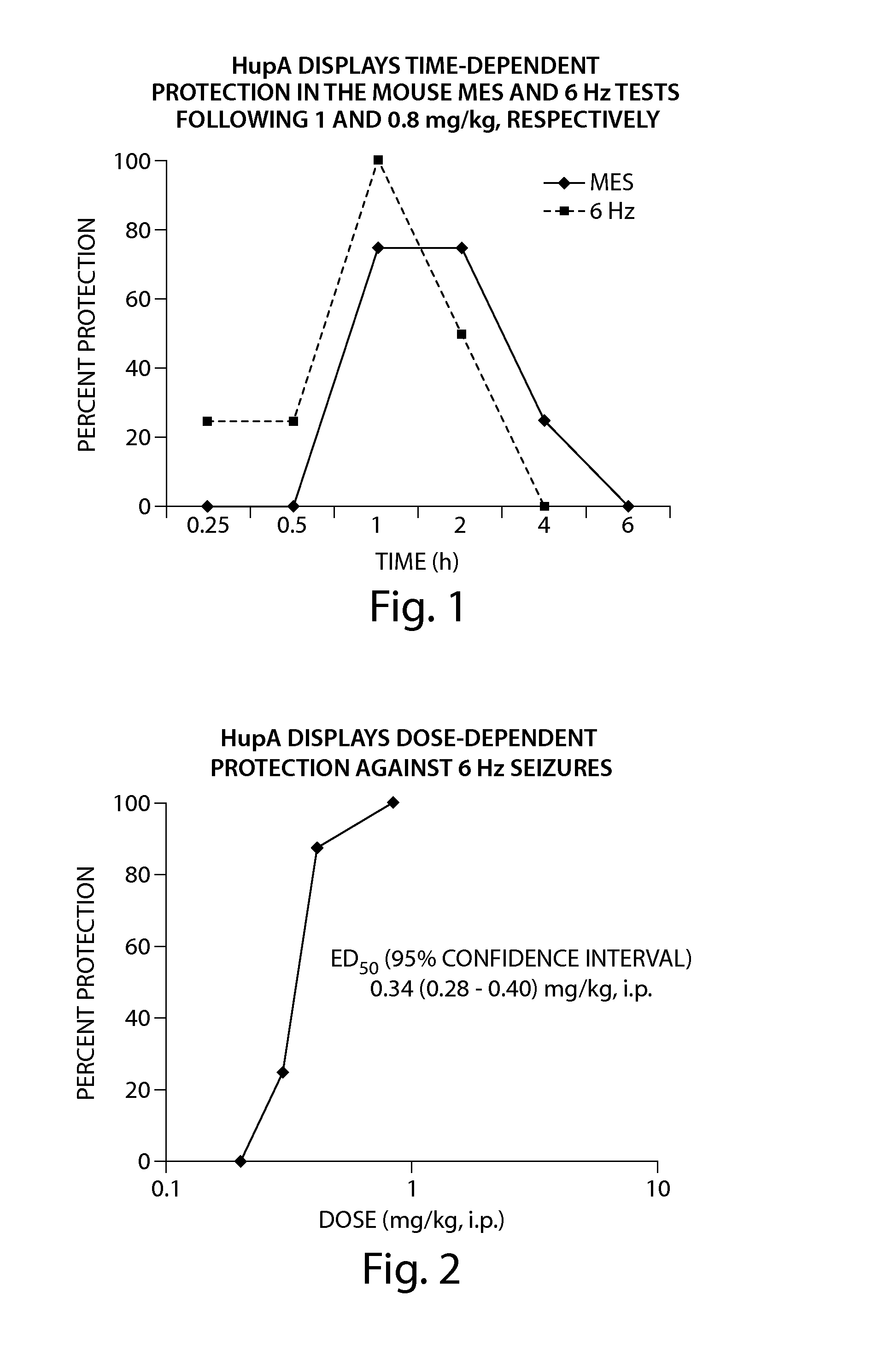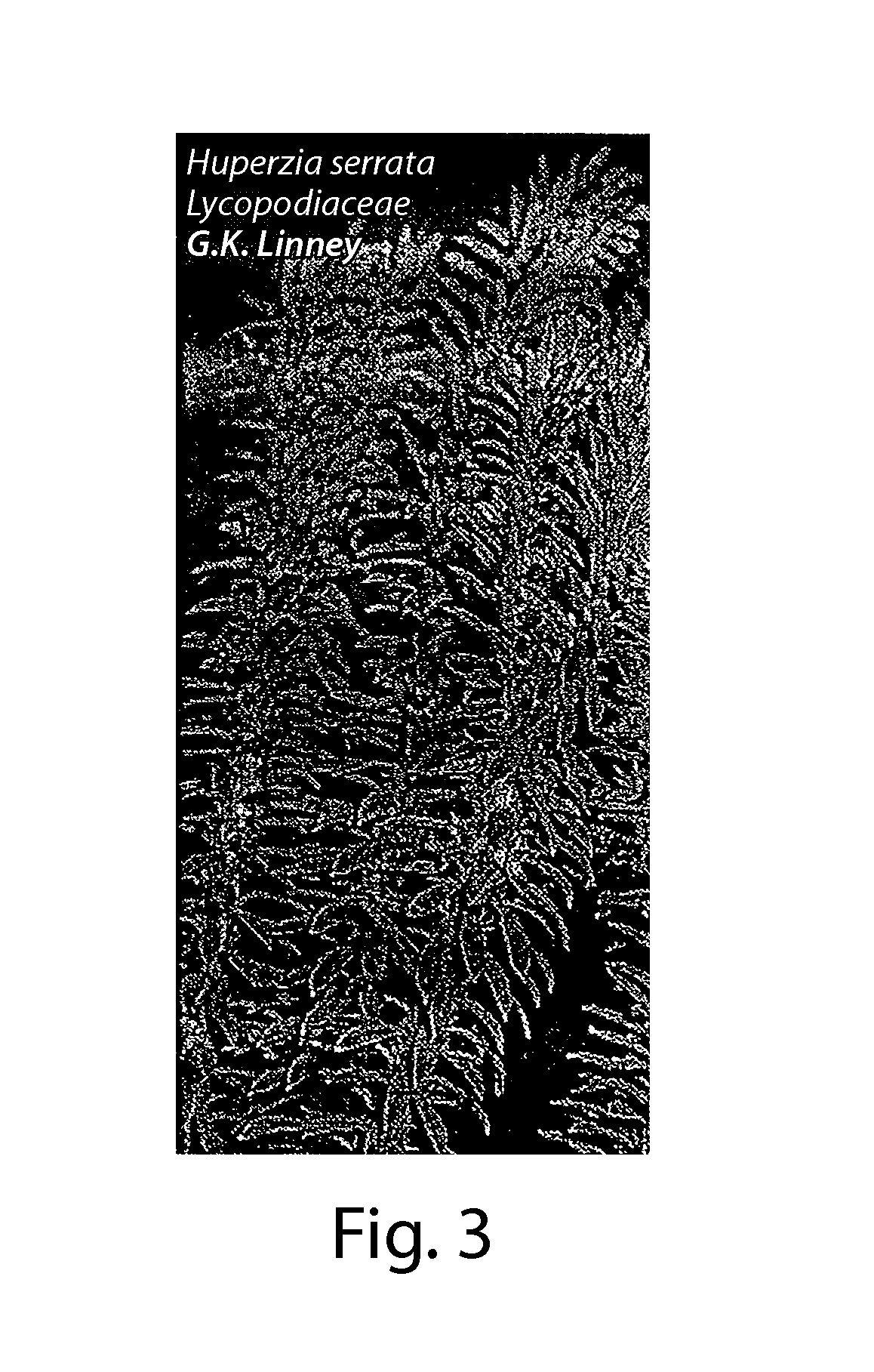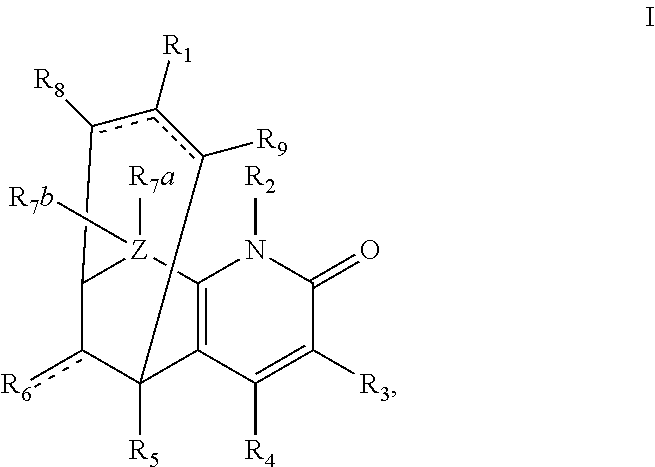Treatment Of Neurological Disorders Using Huperzine
a technology of neurological disorders and huperzine, which is applied in the field of neurological disorders using huperzine, can solve the problems of poor pain management of some conditions such as nerve injuries and chronic inflammatory diseases, and the use of many of them is limited, so as to reduce the severity and perception of pain, and reduce the severity or duration
- Summary
- Abstract
- Description
- Claims
- Application Information
AI Technical Summary
Benefits of technology
Problems solved by technology
Method used
Image
Examples
Embodiment Construction
[0054]Pain is diagnosed and evaluated in a number of standard methods such as the McGill Questionnaire (Melzack, R., 1975, Pain 1:277-299; Wright et al, 2001, Eur. J. Pain 5:279-284). Children as young as two years old can report pain, and standards for evaluating pain in children include evaluation of facial expression (Bieri et al., 1990, Pain 41: 139-150; Kuttner et al, 1989, Can. J. Behav. Sci. 21: 198-209). A medically desirable result of a reduction in pain for joint disease such as osteoarthritis is measured, e.g., using a visual analog pain scale described in Peyron et al., 1993, J. Rheumatol. 20 (suppl.39):10-15).
[0055]Huperzine compounds are used to relieve both acute and chronic pain. Subjects to be treated are diagnosed with pain as described above or report / describe pain perception. Administration for pain relief is distinguished from patients or mode of administration for treatment of AD. For example, candidate patients for treatment are selected based on exclusion fro...
PUM
| Property | Measurement | Unit |
|---|---|---|
| Volume | aaaaa | aaaaa |
| Volume | aaaaa | aaaaa |
| Volume | aaaaa | aaaaa |
Abstract
Description
Claims
Application Information
 Login to View More
Login to View More - R&D
- Intellectual Property
- Life Sciences
- Materials
- Tech Scout
- Unparalleled Data Quality
- Higher Quality Content
- 60% Fewer Hallucinations
Browse by: Latest US Patents, China's latest patents, Technical Efficacy Thesaurus, Application Domain, Technology Topic, Popular Technical Reports.
© 2025 PatSnap. All rights reserved.Legal|Privacy policy|Modern Slavery Act Transparency Statement|Sitemap|About US| Contact US: help@patsnap.com



